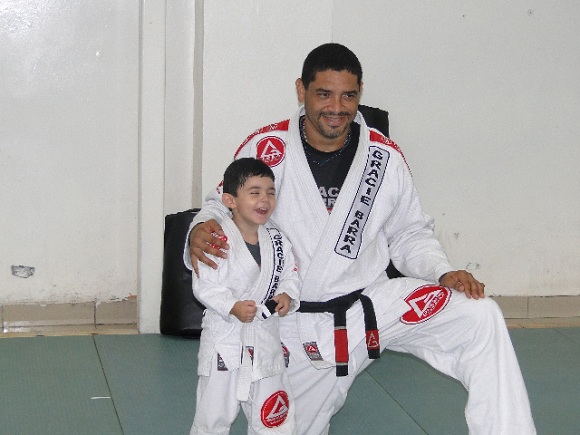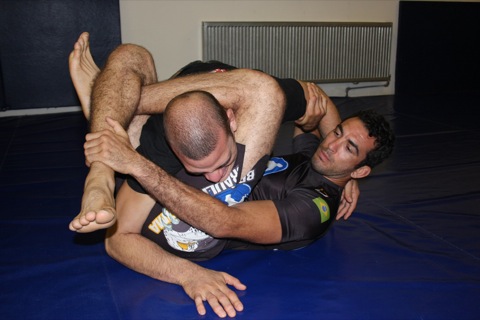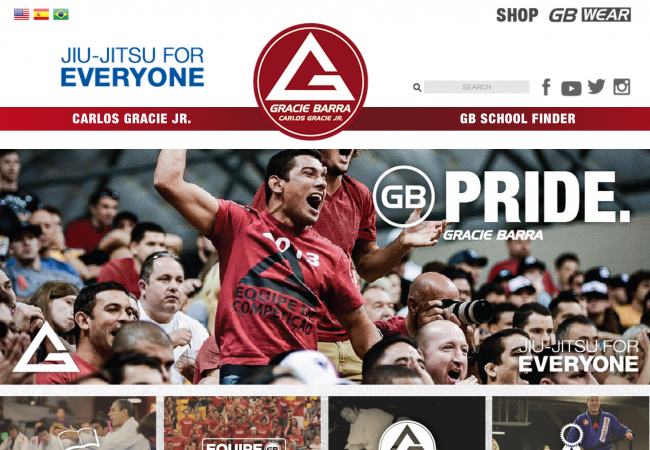One of our newest GMAs, black belt Hector Vasquez has done some great work in Panama, where he heads a Gracie Barra affiliate school packed with students of all ages, all with the desire to incorporate the best of what Jiu-Jitsu has to offer into their lives.
Check out the interview with Hector, and, if you’re around the Central America area, find out how to get in on the next championship he’s promoting.
How did you end up in Panama and how did you start the academy and who was your main sponsor?
Hector: I was born here but moved to Miami in 1981. I did not visit Panama again until 1990. Then, in 1998, I started to visit Panama quite often and liked how the country was developing. The idea was to move back to where I was born. I was Paulo Castro’s main replacement at GB Miami when he traveled to Brazil for his business. Teaching class was getting me ready to make my move. On one of his trips he took me to the Gracie Barra main school, at Espacio Vital in Barra do Tijuca, where we asked Carlos Gracie Jr. for his blessing to open the first Gracie Barra Academy in Central America.
I’ll never forget his response while he looked over our shoulder, as he watched the class from his white plastic chair on the side of the mat: ¨Gracie Barra Panama,¨ in a heavy Brazilian accent! It was so cool hearing that! So in 2001 I took Paulo to teach a seminar to a group of guys who I met while visiting Panama in 2000. Ever since that first seminar he has been my sponsor. He has travelled to Panama at least once a year to teach a seminar or take the responsibility of being the advisor for my tournaments in Panama. So I dare say he has been the reason why I am where I am today.
Why did you start training Jiu Jitsu?
Hector: I started training Jiu Jitsu in 1994 in Miami, Florida. I began training primarily because I saw Royce Gracie submit all his opponents at the first UFC. I told myself, ¨This is the discipline I want to learn.¨ Then a friend from high school introduced me to a guy who knew some grappling and we started training together at my house. We would get together and watch reruns from the first UFC and, just for fun, do mock fights in the back yard of my house.
Then we started to meet other guys who had formal training and they started to train with us at my house. We did this for almost a years until our muay thai intructor, Mike Lee Kanarek, introduced us to Fabiano Iha, Amal Easton and Crolin Gracie, who had come to his academy in Weston, Florida, in 1996. We trained with them for a year. Fabiano Iha got involved in MMA and eventually made it to the UFC and Amal Easton and Crolin Gracie moved back to Brazil. Then we met Paulo Castro in 1998 and became part of the first generation of students from the Gracie Barra Miami Academy.
When did you first compete in a Jiu Jitsu competition, how did you do and what did you learned about these types of tournaments?
Hector: I first competed in 1999 at The fifth Pan-American Championship, held at the James L. Knight Center in downtown Miami, as a blue belt. I lost my first fight by points, however, I learned from the defeat. I saw the unity between each team. Carlos Gracie Junior’s Barra team in a corner of the gym, Royler Gracie and his Humaitá team at another section, Jacare´s Alliance and many others screaming while one of their competitors was fighting.
I also learned that competitors were also used as referees. I saw Paulo Castro, Marcio Feitosa, Kaseka Muniz and Roberto Correa do this. So I learned that, in order to do a competition of this magnitude, you need everyone to help out.
What are your biggest achievements in Jiu-Jitsu competition?
Hector: My most remarkable achievement in competition (not necessarily a tournament) was opening the first Jiu Jistsu Academy in Panama, in 2002. I say it’s competition because it was not easy moving to a country where all the teachers of other arts are black belts and I was a purple belt in Jiu Jitsu. I had to show why my rank can teach other people in a martial art.
From that achievement I can say that I was able to send students from Panama to compete in different tournaments, especially the IBJJF championships all over the world, and bring back medals from white to brown belts. Another achievement in Jiu-Jitsu was when I founded the first Jiu-Jitsu Panama Association (APJJ) which I registered in the Panamanian Sport authority (PAN DEPORTES), which is the same as the Secretaria do Deporte in Brazil. This led to the first Jiu-Jitsu competition, in 2008. Competitors from Costa Rica and Panama competed in white, blue and purple divisions. Since 2009 more than 500 competitors from Central, South and North America as well as other parts of the world have taken part in APJJ Tournaments.
As far as achievements in my personal competition career, winning a gold medal as a black belt in the Miami Open 2010 in the medium heavy division and silver in the absolute is at the top. It was nine years since I did my last competition, at the 2001 Pan-American in Orlando, Florida, when I got the silver medal as a purple belt and took gold at the Florida State Brazilian Jiu-Jitsu Championship also as a purple belt in the year 2000.
When did you get your black belt?
Hector: I train directly with Paulo Castro since 1998 and he is my main instructor but I received my black directly from Master Carlos Gracie Jr. in 2008 at the annual GB Instructors gathering in Lake Forest, California. Flavio Almeida recommended it be given to me since he saw the work we were doing in Panama during a seminar he gave in 2007.
Hector, what are you plans in the near future?
I´m currently organizing with the APJJ the first PRO-AM GI-NO-GI Jiu Jitsu Championship plus two super fights yet to be determined. The tournament will take place June 18 and 19, 2011 and the next in November. I was able to gather over $50,000. from sponsors to bring the level of Jiu-Jitsu in Panama to another dimension. You know, Panama has a lot to offer.
The Panama canal and its history are the main attraction. There are tours in different activities such as fishing, surfing, all types of extreme sports, shopping, and historical landmarks. In fact, the 2011 Billabong ISA World Surfing Games will be held on the beautiful waves of Panama (Playa Venao) from June 25 through July 3, 2011.
Both the ISA and Billabong are thrilled to announce the destination of next year’s event after receiving several attractive bid options for 2011. ISA President Fernando Aguerre stated, “The surf in Panama is exceptional, and after having great success with the Panama ISA World Masters Surfing Championship in 2010, they are eager to bring one of their feature World Championship events to the powerful waves and tropical weather of Panama. The ISA is looking forward to a great Billabong ISA World Surfing.”
How can competitors get involved in your tournament?
All they need to do is log on to www.apanjj.com; there they will get all the information they need to register. The website also provides all the information on the breakdown of the PRO and AM division, plus information in travel and accommodations. Thanks, GRACIEMAG! I wanna tell the rest of the world that you can find a place to train when ever you come to Panama.





